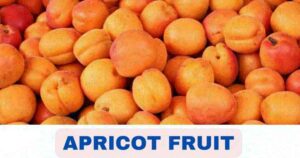Peanuts are a popular and versatile legume that is enjoyed by many people around the world. They can be eaten on their own, added to recipes, or processed into peanut butter. When it comes to the glycemic index (GI) of peanuts, they are considered to have a low glycemic index.
The glycemic index is a scale that measures how quickly and how much a particular food raises blood sugar levels after consumption. It ranks foods on a scale of 0 to 100, with pure glucose having a value of 100, representing the fastest and highest rise in blood sugar levels. Foods with a low GI (below 55) are digested and absorbed more slowly, resulting in a gradual and steady release of glucose into the bloodstream.
Peanut Glycemic Index
What is the GI Index of Peanut?
- Glycemic Index (GI) of Peanut is 14
Peanuts have a glycemic index of 14, classifying them as a food with a low glycemic index. This means that the carbohydrates in peanuts are digested and absorbed relatively slowly, leading to a minimal increase in blood sugar levels.
The low glycemic index of peanuts can be attributed to several factors. First, peanuts have a relatively low carbohydrate content. The majority of their macronutrient composition consists of fats and proteins. Carbohydrates make up only a small portion of the total calorie content of peanuts. When compared to other high-carbohydrate foods, such as bread or rice, peanuts contain a lower amount of carbohydrates, resulting in a reduced glycemic impact.
Moreover, peanuts are rich in healthy fats, primarily monounsaturated and polyunsaturated fats. Fats have minimal impact on blood sugar levels as they are not rapidly broken down and absorbed. The presence of fats in peanuts helps to slow down the digestion and absorption of carbohydrates, resulting in a slower and more controlled release of glucose into the bloodstream.
Additionally, peanuts are an excellent source of protein and dietary fiber. Protein and fiber are known to have a positive effect on blood sugar control. Protein helps to slow down the digestion and absorption of carbohydrates, further contributing to a reduced glycemic response. Fiber, on the other hand, adds bulk to the diet and promotes satiety, which can help stabilize blood sugar levels and prevent spikes in glucose.
Furthermore, peanuts contain bioactive compounds, such as resveratrol and phenolic acids, which have been associated with potential health benefits, including improved insulin sensitivity and reduced risk of type 2 diabetes. These compounds may contribute to the favorable glycemic response observed with peanut consumption.
It’s important to note that the glycemic index of peanuts can be influenced by various factors, including the processing and preparation methods. Raw or dry-roasted peanuts have a lower glycemic index compared to oil-roasted or honey-roasted peanuts, which may have added sugars or fats. Similarly, flavored or coated peanuts may have a higher glycemic index due to added ingredients. Therefore, it is advisable to choose plain, unsalted peanuts for the lowest glycemic impact.
Incorporating peanuts into your diet is relatively easy. They can be enjoyed as a snack on their own, added to salads, stir-fries, or baked goods, or even processed into peanut butter. However, it’s important to be mindful of portion sizes, as peanuts are energy-dense and high in calories. A handful of peanuts (approximately one ounce) is a reasonable portion size to enjoy their health benefits without excessive calorie intake and proteins, make them a satisfying and nutritious snack option that can help stabilize blood sugar levels.
The benefits of including peanuts in a diabetic or blood sugar-friendly diet extend beyond their low glycemic index. Peanuts have been shown to have a positive impact on various aspects of health. The monounsaturated and polyunsaturated fats in peanuts are heart-healthy fats that can help reduce LDL cholesterol levels and lower the risk of cardiovascular diseases. They also contain essential vitamins and minerals such as vitamin E, folate, magnesium, and potassium, which are important for overall health and wellbeing.
In addition to their favorable glycemic index, peanuts have another advantage for blood sugar control. They have a low glycemic load (GL), which takes into account both the glycemic index and the carbohydrate content of a food. Peanuts have a relatively low carbohydrate content compared to their overall calorie content, resulting in a low glycemic load. This means that even though peanuts contain carbohydrates, the amount is relatively small compared to their overall nutritional value.
It’s worth noting that while peanuts have a low glycemic index and glycemic load, it’s essential to consider the overall dietary context. For individuals with diabetes or those aiming to manage their blood sugar levels, it is important to focus on a well-rounded, balanced diet that includes a variety of foods from different food groups. Peanuts should be consumed in moderation, along with other nutrient-dense foods, such as whole grains, lean proteins, fruits, and vegetables, to ensure a comprehensive nutritional intake.
It is also important to be mindful of portion sizes when consuming peanuts. While they offer numerous health benefits, they are energy-dense and can contribute to calorie intake if consumed excessively. As with any food, portion control is key to maintaining a healthy balance.
Glycemic Index of Peanut Butter
Peanut butter is a popular spread made from ground peanuts. It is loved for its creamy texture, rich flavor, and versatility in various recipes. When it comes to the glycemic index (GI) of peanut butter, it is considered to have a low glycemic index.
Peanut butter has a glycemic index that is generally considered to be low. The exact GI value can vary depending on factors such as the brand, processing methods, and any added ingredients.
GI of Peanut Butter
What is the GI Index of Peanut Butter?
- Natural or homemade peanut butter has a glycemic index of around 14 to 22, while commercial varieties may range from 33 to 55. These values classify peanut butter as a food with a low to medium glycemic index.
Several factors contribute to the low glycemic index of peanut butter. First, peanuts themselves have a low glycemic index, as discussed earlier. When peanuts are ground into butter, their carbohydrate content remains relatively low compared to the total calorie content. This results in a slower release of glucose into the bloodstream.
Furthermore, peanut butter contains a significant amount of healthy fats and proteins. Fats and proteins have minimal impact on blood sugar levels as they are not rapidly broken down and absorbed. The presence of fats and proteins in peanut butter helps to slow down the digestion and absorption of carbohydrates, leading to a more controlled release of glucose into the bloodstream.
It’s important to note that the glycemic index of peanut butter can be influenced by certain factors. Some commercial brands of peanut butter may contain added sugars or hydrogenated oils, which can increase the glycemic index. Therefore, it is advisable to choose natural or homemade peanut butter that contains minimal or no added ingredients.
When incorporating peanut butter into your diet, it’s important to consider portion sizes and moderation. While peanut butter has a low glycemic index, it is energy-dense and high in calories. Consuming large quantities can contribute to calorie intake and potentially affect weight management. A reasonable portion size of peanut butter is typically about two tablespoons (30 grams), which provides the flavor and nutritional benefits without excessive calorie intake.
In addition to its low glycemic index, peanut butter offers several health benefits. It is a good source of healthy fats, primarily monounsaturated and polyunsaturated fats, which have been associated with reduced risk of heart disease. Peanut butter also contains vitamins and minerals, such as vitamin E, magnesium, and potassium, which contribute to overall health and wellbeing.
Peanut butter is a versatile ingredient that can be incorporated into a variety of dishes and snacks. It can be spread on whole grain bread or rice cakes, added to smoothies or oatmeal, used as a dip for fruits and vegetables, or even included in baking recipes. Its creamy texture and rich taste make it a popular choice for both sweet and savory applications.








